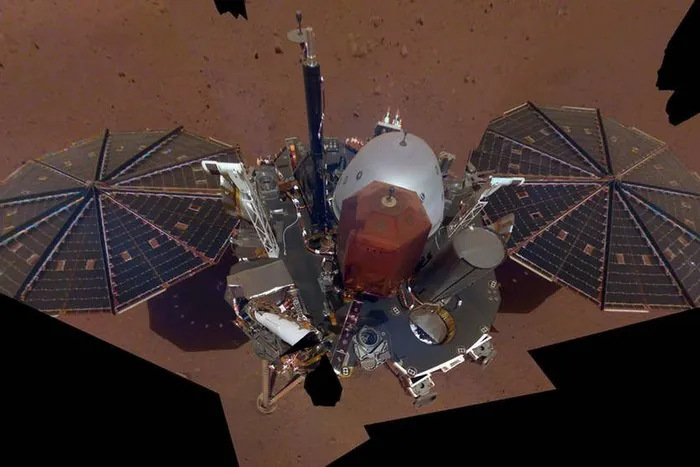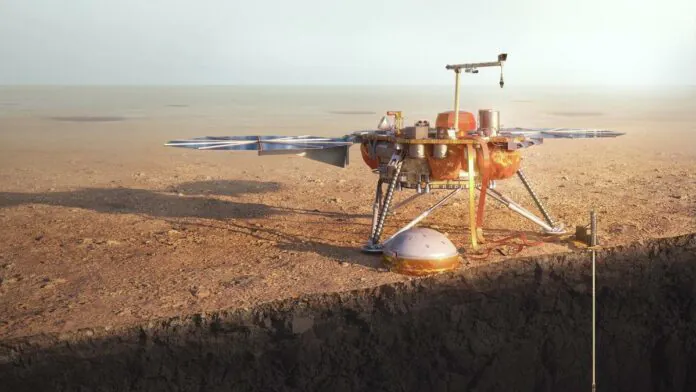© ROOT-NATION.com - Use of content is permitted with a backlink.
NASA’s InSight Mars probe has two or three months left to work on Mars, after which it will gradually fall into eternal sleep. The reason is trivial – so much Martian dust has settled on the solar panels that the energy produced is no longer enough to operate the probe’s onboard systems. The apparatus will continue collecting scientific data until the end of the summer, after which it will cease all activities by the end of the year. Yesterday, NASA said it would continue to use the spacecraft’s seismometer to register marsquakes until the energy runs out, probably in July. Flight controllers will then monitor InSight until the end of this year before canceling everything.
“There really hasn’t been too much doom and gloom on the team. We’re really still focused on operating the spacecraft,” said Jet Propulsion Laboratory’s Bruce Banerdt, the principal scientist. Since landing on Mars in 2018, InSight has recorded more than 1,300 marsquakes, the largest, with a magnitude of 5, occurred two weeks ago.

This will be NASA’s second Martian landing module lost to the dust: in 2018, a global dust storm destroyed Opportunity. In the case of InSight, the dust was collected gradually, especially over the last year.
Two other NASA spacecrafts operating on the surface of Mars – the Curiosity drone and the Perseverance rover – are still powered by nuclear energy. According to Planetary Science Director Lori Glaze, the space agency could rethink solar energy for Mars in the future, or at least experiment with new panel cleaning technology or target less stormy seasons.
InSight currently produces one-tenth of the energy it produced upon arrival. Kathya Zamora Garcia, deputy project manager, said the landing module initially had enough power to work for one hour and 40 minutes, now up to 10 minutes maximum.

The InSight team expected such a large accumulation of dust, but hoped that a gust of wind or a dust whirlwind could clean the solar panels. This has not yet happened, despite the passage of several thousand vortices. “None of them have quite hit us dead-on yet enough to blow the dust off the panels,” Banerdt told reporters.
Another scientific instrument, called the mole, had to be buried 5 meters below the ground to measure the internal temperature of Mars. But the German miner never climbed more than half a meter due to the unexpected composition of the red soil, and at the beginning of last year he was finally declared dead.
You can also help Ukraine fight with Russian occupants via Savelife or via an official page of the National Bank of Ukraine.
Read also:
- Water on Mars existed much longer — evidence proves
- What hinders the extraterrestrial mining plans of mankind?


